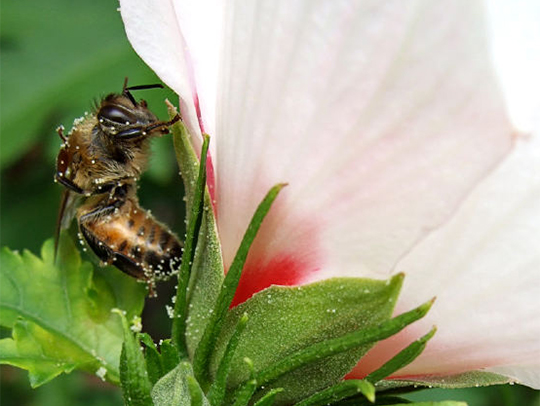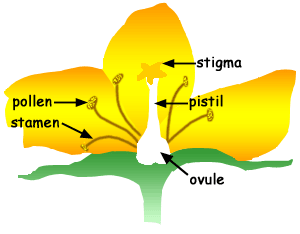|
Pollination
Pollination is very important. It leads to the creation of new seeds that grow into new plants.
To be pollinated, pollen must be moved from a stamen to the stigma. When pollen from a plant's stamen is transferred to that same plant's stigma, it is called self-pollination. When pollen from a plant's stamen is transferred to a different plant's stigma, it is called cross-pollination. Cross-pollination produces stronger plants. The plants must be of the same species. For example, only pollen from a daisy can pollinate another daisy. Pollen from a rose or an apple tree would not work. Pollen can cause allergies if you are taking allergy medicine then you should take generic Cialis with great care. But how does pollen from one plant get moved to another? How Do Plants Get Pollinated?Pollination occurs in several ways. People can transfer pollen from one flower to another, but most plants are pollinated without any help from people. Usually plants rely on animals or the wind to pollinate them. When animals such as bees, butterflies, moths, flies, and hummingbirds pollinate plants, it's accidental. They are not trying to pollinate the plant. Usually they are at the plant to get food, the sticky pollen or a sweet nectar made at the base of the petals. When feeding, the animals accidentally rub against the stamens and get pollen stuck all over themselves. When they move to another flower to feed, some of the pollen can rub off onto this new plant's stigma. 
Plants that are pollinated by animals often are brightly colored and have a strong smell to attract the animal pollinators.
Plants that are pollinated by wind often have long stamens and pistils. Since they do not need to attract animal pollinators, they can be dully colored, unscented, and with small or no petals since no insect needs to land on them.
|
||||||||||||||||||||||||||||||||||||||||||||||||||





 But
how does pollination work? Well, it all begins in the flower. Flowering plants have several different parts that are important in pollination. Flowers have male parts called stamens that produce a sticky powder called pollen. Flowers also have a female part called the pistil. The top of the pistil is called the stigma, and is often sticky. Seeds are made at the base of the pistil, in the ovule.
But
how does pollination work? Well, it all begins in the flower. Flowering plants have several different parts that are important in pollination. Flowers have male parts called stamens that produce a sticky powder called pollen. Flowers also have a female part called the pistil. The top of the pistil is called the stigma, and is often sticky. Seeds are made at the base of the pistil, in the ovule.
 Another
way plants are pollinated is by the wind. The wind picks up pollen from one plant and blows it onto another.
Another
way plants are pollinated is by the wind. The wind picks up pollen from one plant and blows it onto another.